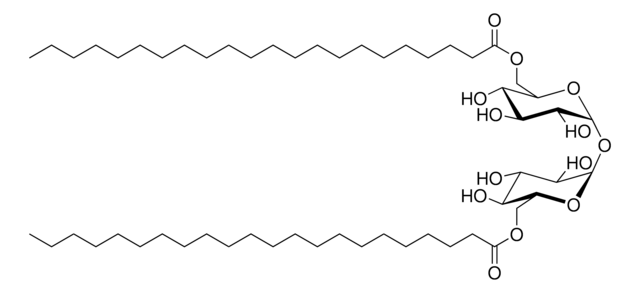MABC128
Anti-FIP200 Antibody, clone 14E11.2
clone 14E11.2, from mouse
Sinonimo/i:
RB1-inducible coiled-coil protein, 1FAK family kinase-interacting protein of 200 kDa, FIP200
About This Item
Prodotti consigliati
Origine biologica
mouse
Livello qualitativo
Forma dell’anticorpo
purified antibody
Tipo di anticorpo
primary antibodies
Clone
14E11.2, monoclonal
Reattività contro le specie
human, mouse
tecniche
immunocytochemistry: suitable
western blot: suitable
Isotipo
IgG2bκ
N° accesso NCBI
N° accesso UniProt
Condizioni di spedizione
wet ice
modifica post-traduzionali bersaglio
unmodified
Informazioni sul gene
human ... RB1CC1(9821)
Descrizione generale
The previously assigned protein identifier Q86YR4 has been merged into Q8TDY2. Full details can be found on the UniProt database.
Specificità
Immunogeno
Applicazioni
Apoptosis & Cancer
Apoptosis - Additional
Immunocytochemistry Analysis: A 1:500 dilution from a representative lot detected FIP200 in NIH/3T3, A431, and HeLa cells.
Immunocytochemistry Analysis: A 1:250 dilution from a representative lot detected FIP200 in untreated and chloroquinone-treated HUVEC cells.
Qualità
Western Blot Analysis: 1 µg/mL of this antibody detected FIP200 in 10 µg of HeLa cell lysate.
Descrizione del bersaglio
Stato fisico
Stoccaggio e stabilità
Risultati analitici
HeLa cell lysate
Altre note
Esclusione di responsabilità
Not finding the right product?
Try our Motore di ricerca dei prodotti.
Codice della classe di stoccaggio
12 - Non Combustible Liquids
Classe di pericolosità dell'acqua (WGK)
WGK 1
Punto d’infiammabilità (°F)
Not applicable
Punto d’infiammabilità (°C)
Not applicable
Certificati d'analisi (COA)
Cerca il Certificati d'analisi (COA) digitando il numero di lotto/batch corrispondente. I numeri di lotto o di batch sono stampati sull'etichetta dei prodotti dopo la parola ‘Lotto’ o ‘Batch’.
Possiedi già questo prodotto?
I documenti relativi ai prodotti acquistati recentemente sono disponibili nell’Archivio dei documenti.
Articoli
Autophagy is a regulated process involved in cell growth, development, and recycling of cytoplasmic components in cells.
Il team dei nostri ricercatori vanta grande esperienza in tutte le aree della ricerca quali Life Science, scienza dei materiali, sintesi chimica, cromatografia, discipline analitiche, ecc..
Contatta l'Assistenza Tecnica.

![Poly[(R)-3-hydroxybutyric acid] natural origin](/deepweb/assets/sigmaaldrich/product/structures/129/476/7d1c924b-f644-4889-a2d6-d7a923ce382c/640/7d1c924b-f644-4889-a2d6-d7a923ce382c.png)





